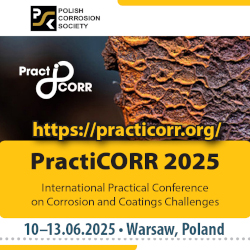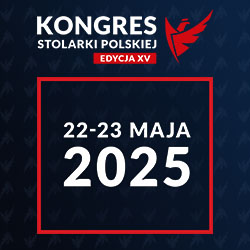Open Access (Artykuł w pliku PDF)
The evaluation of adhesion of steel fibers to concrete matrix after their mechanical treatment
mgr inż. Dorota Krystosik, Politechnika Koszalińska, Wydział Inżynierii Lądowej, Środowiska i Geodezji
ORCID: 0000-0001-5861-8530
Adres do korespondencji: Ten adres pocztowy jest chroniony przed spamowaniem. Aby go zobaczyć, konieczne jest włączenie w przeglądarce obsługi JavaScript.
DOI: 10.15199/33.2022.11.01
Oryginalny artykuł naukowy
Streszczenie. W artykule podjęto próbę oceny przyczepności stalowych włókien do matrycy cementowej po ich obróbce mechanicznej, która polegała na rozwinięciu powierzchni pobocznicy przez obróbkę ścierną przy użyciu elektrokorundu. W pierwszym etapie badań dokonano oceny powierzchni włókien (przed i po obróbce ściernej) za pomocą technik metalografii. Wykonano, a następnie porównano obrazy powierzchni włókien w skali mikro, jak również określono chropowatość powierzchni włókien. Drugi etap badań dotyczył bezpośredniej oceny przyczepności włókien do matrycy betonowej metodą pull-out.
Słowa kluczowe: przyczepność; matryca betonowa; stalowe włókna; badanie pull-out.
Abstract. In the article was attempt to evaluate the adhesion of steel fibers to the concrete matrix after their mechanical treatment. The processing of the fibers consisted of developing on of their surface by an abrasive treatment with the use of electrocorundum. In the first stage of the research, the surface of the fibers was assessed (before and after abrasion treatment) using the selected metallographic techniques. A micro scale images of the fibers surface were made and compared, as well as the surface roughness of the fibers was determined. The second stage of the research concerned the direct evaluation of adhesion using the pull-out test.
Keywords: adhesion; concrete matrix; steel fibers; pull-out test.
Literatura
[1] Beglarigale A, Yazici H. Pull-out behavior of steel fiber embedded in flowable RPC and ordinary mortar. Construction and Building Materials. 2015; DOI: 10.1016/j.conbuildmat.2014.11.
[2] Alwan JM, NaamanAE, HansenW. Pull-Out Work of Steel Fibers From Cementitious Composites: Analytical Investigation. Cement&Concrete Composites. 1991; 13: 247 – 255.
[3] Kim DJ, Park SH, Ryu GS, Koh KT. Comparative flexural behavior of Hybrid Ultra High Performance Fiber Reinforced Concrete with different macro fibers. Construction and Building Materials. 2011; DOI: 10.1016/j.conbuildmat. 2011.04.
[4] Soulioti DV, Barkoula NM, PaipetisA, Matikas TE. Effects of Fibre Geometry and Volume Fraction on the Flexural Behaviour of Steel-Fibre Reinforced Concrete. Strain. 2011; DOI: 10.1111/j. 1475-1305.2009.00652. x
[5] Nataraja MC, Dhang N, Gupta A. P. Toughness characterization of steel fiber-reinforced concrete by JSCE approach. Cement and Concrete Research. 2000; DOI: 10.1016/s0008-8846 (00) 00212-x.
[6] Katzer J, Domski J. Quality and mechanical properties of engineered steel fibres used as reinforcement for concrete. Construction and Building Materials. 2012; DOI: 10.1016/j.conbuildmat. 2012.02.
[7] Abdallah S, Fan M, Zhou M, Le Geyt S. Anchorage Effects of Various Steel Fibre Architectures for Concrete Reinforcement. International Journal of Concrete Structures and Materials. 2016; DOI: 10.1007/s40069-016-0148-5.
[8] Zile E, Zile O. Effect of the fiber geometry on the pullout response of mechanically deformed steel fibers. Cement and Concrete Research. 2013; DOI: 10.1016/j.cemconres.2012.10.014.
[9] Cunha VMCF, Barros JAO, Sena-Cruz JM. Bond-Slip Mechanisms of Hooked-End Steel Fibers in Self-Compacting Concrete. Materials Science Forum. 2008; DOI: 10.4028/www. scientific. net/msf. 587-588.877.
[10] Abdallah S, Fan M, Zhou X. Effect of Hooked- End Steel Fibres Geometry on Pull-Out Behaviour of Ultra-High Performance Concrete. Construction and Architectural Engineering. 2016; 10 (12): 1594 – 1599.
[11]Won J.-P, Hong B.-T, Lee S.-J, Choi SJ. Bonding propertiesofamorphousmicro-steelfibre-reinforced cementitious composites.Composite Structures. 2013;DOI: 10.1016/j.compstruct. 2013.02.015.
[12] Markovic I. High-Performance Hybrid-Fibre Concrete. Netherlands: DUP Science; 2006.
[13] Wiemer N, Wetzel A, Schleiting M, Krooß P, Vollmer M, Niendorf T, Böhm S, Middendorf B. Effect of Fibre Material and Fibre Roughness onthe Pullout Behaviour of Metallic Micro Fibres Embedded in UHPC. Materials. 2020; DOI: 10.3390/ma13143128.
[14] Zhu Y, Zhang Y, Qu S, Kumar A. Flexural and Tensile Strength of Ultra-High-Performance Concrete with ZnPh-Treated Steel Fibers. Journal of Materials in Civil Engineering. 2020; DOI: 10.1061/(asce) mt. 1943-5533.0003372.
[15] Oh T, You I, Banthia N, Yoo D.-Y. Deposition of nanosilica particles on fiber surface for improving interfacial bond and tensile performances of ultra-high-performance fiber-reinforced concrete. Composites Part B. 2021; DOI: 10.1016/j. compositesb. 2021.109030.
[16] Chun B, Yoo D.-Y, Banthia N. Achieving slip-hardening behavior of sanded straight steel fibers in ultra-high-performance concrete. Cement and Concrete Composites. 2020; DOI: 10.1016/j. cemconcomp. 2020.103669.
[17] Yoo D.-Y, Chun B, Kim J.-J. Bond performance of abraded arch-type steel fibers in ultra- -high-performance concrete. Cement and Concrete Composites. 2020; DOI: 10.1016/j. cemconcomp. 2020.103538.
[18] Domski J, Katzer J, ZakrzewskiM, PonikiewskiT. Comparison of themechanical characteristics of engineered and waste steel fiber used as reinforcement for concrete. Journal of Cleaner Production. 2017; DOI: 10.1016/j.jclepro. 2017.04.165.
[19] Carreira JD, Chu K-H. Stress-Strain Relationship for Plain Concrete in Compression. American Concrete Institute Journal. 1985; 82: 797 – 804.
Przyjęto do druku: 06.09.2022 r.
Materiały Budowlane 11/2022, strona 1-5 (spis treści >>)






























